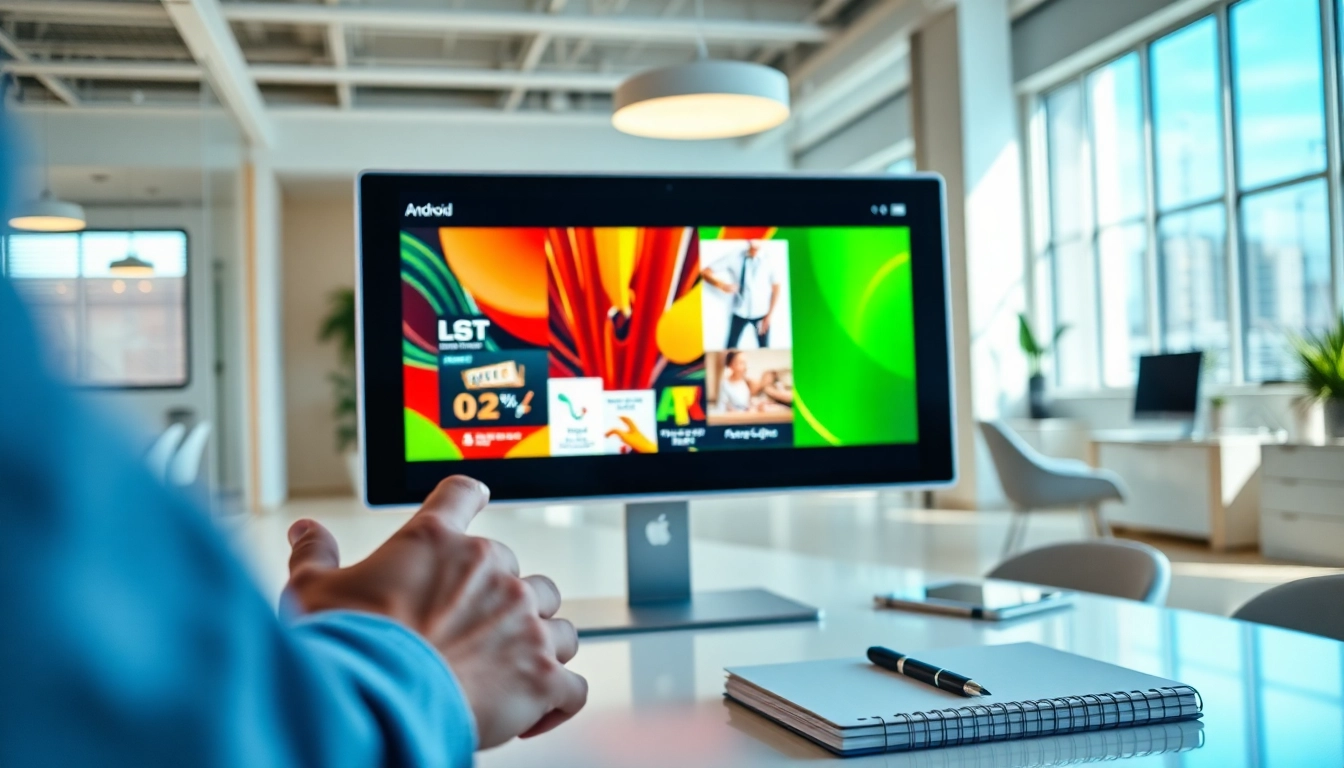Understanding Android Digital Signage Player
What is an Android digital signage player?
An Android digital signage player is a device that utilizes the Android operating system to display content on digital screens. These players serve as the supporting hardware that manages and presents digital media, including images, videos, and live feeds, in a dynamic and interactive way. Designed for various environments—from retail stores to corporate offices—Android digital signage players enable businesses to communicate effectively with their audience through vibrant and engaging displays.
Key features and capabilities
Android digital signage players come packed with robust features that cater to the diverse needs of users. Some of the key functionalities include:
- High-definition display: They support various resolutions, including 4K, ensuring that content is delivered in crisp detail.
- Customizable software: Many players allow for the installation of third-party applications, giving users the ability to tailor functionalities to their specific needs.
- Remote management: Users can manage content and settings remotely, making it easy to update and change displays without needing to access the physical player.
- Various content formats: These players typically support a wide range of media types, including videos, images, presentations, and live streams.
- Interactivity: Many Android digital signage players are compatible with touch screens, enhancing user engagement through interactive content.
Industry applications and use cases
The versatility of Android digital signage players allows them to be utilized across numerous industries, including:
- Retail: Businesses can showcase promotions, new arrivals, and seasonal specials to attract shoppers.
- Healthcare: Hospitals and clinics can keep patients informed with real-time information and educational content.
- Corporate: Companies can use digital signage for internal communication, displaying key performance metrics, news updates, or employee recognition.
- Education: Schools and universities can enhance the learning experience by displaying instructional content and announcements.
- Transportation: Airports and train stations can provide real-time updates on schedules and services, helping to improve passenger experience.
Setting Up Your Android Digital Signage Player
Installation process overview
Installing an Android digital signage player is a straightforward process, but attention to detail is crucial for seamless functionality. Typically, it involves the following steps:
- Unpack the digital signage player and its accessories.
- Connect the device to the display screen using an HDMI cable.
- Power the player using the supplied power adapter.
- Connect any additional peripherals such as touch-screen monitors or external storage as needed.
- Activate the device by following the on-screen setup instructions to ensure proper configuration.
Connecting to networks and devices
Once the Android digital signage player is powered on, establishing network connections is the next step. This can typically be done via Wi-Fi or a wired Ethernet connection. Here’s how:
- Access the Settings menu on the Android digital signage player.
- Select either Wi-Fi or Ethernet, depending on your preference for connectivity.
- For Wi-Fi, choose your network and enter the password. For Ethernet, simply connect the cable from the router.
Once connected, testing the connection is a good practice to ensure that the player can access content and receive updates smoothly.
Configuring display settings
After connecting to the network, configuring the display settings is essential for optimal performance. This entails:
- Setting the preferred screen resolution, typically through the Settings menu.
- Adjusting brightness and contrast levels to ensure visibility in different lighting conditions.
- Configuring the display orientation for landscape or portrait display based on the layout of the environment.
- Activating any additional features such as screen savers or scheduled content display.
Creating Engaging Content for Android Digital Signage Player
Best practices for content creation
Creating content for an Android digital signage player requires careful planning to maximize viewer engagement and retention. Here are some best practices:
- Keep it concise: Aim for short, impactful messages that can easily be understood at a glance. Avoid lengthy texts.
- Use high-quality visuals: Employ high-resolution images and videos to capture attention and convey professionalism.
- Incorporate branding: Utilize brand colors, logos, and styles to maintain consistency with your overall marketing strategy.
- Regular updates: Change content frequently to keep it fresh and relevant, ensuring that repeat viewers find something new each time.
Content management systems and software tools
To efficiently manage content for an Android digital signage player, many organizations implement content management systems (CMS). These tools provide an array of features:
- Scheduling: Users can set specific times for content to appear on the display, optimizing timing based on audience behavior.
- Remote administration: This functionality allows users to update content without physical access to the device, saving time and resources.
- Analytics: Many CMS solutions provide insights into viewer engagement and behavior, allowing for data-driven content adjustments.
Dynamic content vs. static content
Content for digital signage generally falls into two categories: dynamic and static. Understanding the differences is essential for effective communication:
- Dynamic content: This includes video, animations, or live feeds. Dynamic content is particularly engaging and can be updated in real-time for promotions or live events.
- Static content: Typically represented by still images or text, static content is simpler and often serves as informational signage, like wayfinding or schedules.
Choosing between dynamic and static content should be based on the goals of your messaging and knowledge of your audience’s preferences.
Enhancing User Experience with Android Digital Signage Player
Designing user-friendly interfaces
Creating an intuitive interface for digital signage is critical for maintaining user engagement. Key considerations include:
- Simplicity: A clean and straightforward layout reduces confusion among users and allows them to access information readily.
- Navigation: Ensure that any interactive elements are easy to navigate, with logical pathways to follow for information access.
- Accessibility: Ensure that content is accessible to all audience members, including considerations for those with disabilities.
Interactivity and audience engagement strategies
Enhancing audience engagement can be achieved through various interactive strategies:
- Touchscreen capabilities: Utilizing touch-sensitive displays can encourage audience interaction and make the experience more immersive.
- QR codes: Integrating QR codes within content can allow viewers to learn more or access exclusive information through their mobile devices.
- Social media integration: Display live feeds from social media platforms, inviting viewers to engage with your brand on multiple channels.
Real-time feedback and analytics
Incorporating real-time feedback mechanisms and analytics tools helps businesses track viewer reactions and content performance:
- Surveys and polls: Engaging the audience with quick surveys or polls can provide valuable insights into viewer preferences and satisfaction.
- Performance metrics: Track key metrics such as viewer dwell time and interaction rates to refine content strategy.
- Heat maps: Utilize heat mapping technology to determine areas of high engagement on display screens, optimizing content placement accordingly.
Performance Metrics and Future of Android Digital Signage Player
Key performance indicators to track
Tracking performance metrics is essential to measure the effectiveness of your Android digital signage player. Key performance indicators (KPIs) to monitor include:
- Engagement rates: Metrics related to how often viewers interact with the content displayed can help gauge interest and interaction.
- Dwell time: The amount of time viewers spend looking at the display can indicate the effectiveness of the content.
- Conversion rates: For retail applications, tracking how many viewers act upon the displayed content (like making a purchase) can be invaluable.
Case studies of successful deployments
Examining real-life implementations can provide critical insights into the effective use of Android digital signage players:
For example, a retail chain optimized customer engagement by integrating interactive displays featuring promotional content. By utilizing dynamic content targeting specific customer demographics, they observed a 30% increase in foot traffic and sales conversions during peak promotional periods.
In a corporate environment, a leading tech firm leveraged digital signage to share updates on employee achievements and corporate goals. The initiative improved internal communication and employee morale, leading to a 25% increase in employee satisfaction scores in subsequent assessments.
Future trends in digital signage technology
The future of digital signage, particularly with Android digital signage players, promises exciting innovations:
- Artificial Intelligence: AI will enable more personalized content tailored to individual viewer preferences based on data analysis.
- Augmented Reality: Integrating AR will allow businesses to create immersive experiences that blend digital content with the physical world.
- Cloud-based management: This offers improved scalability, enhanced security, and easier access to content management across multiple locations.



